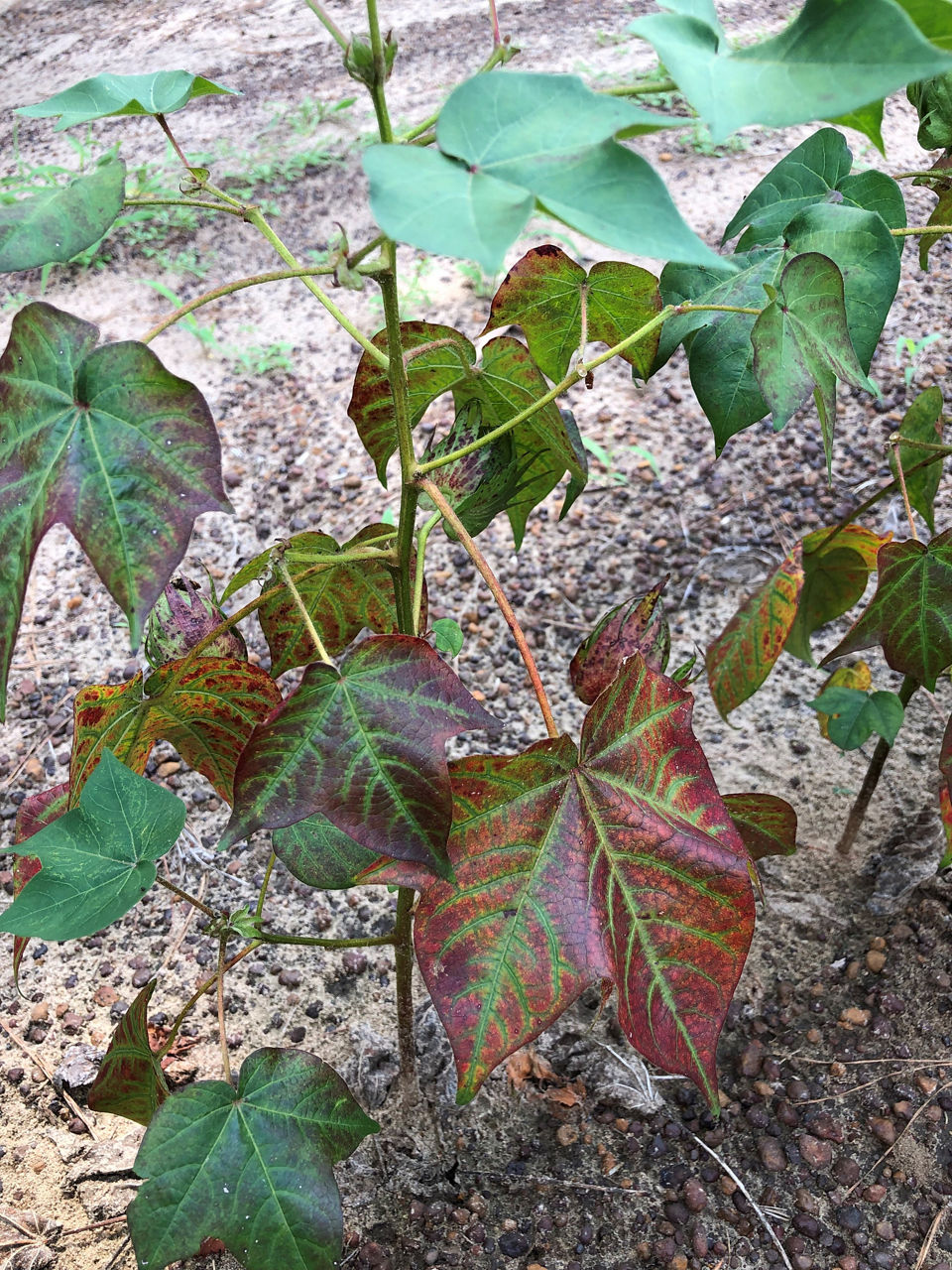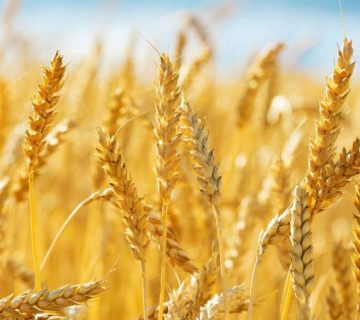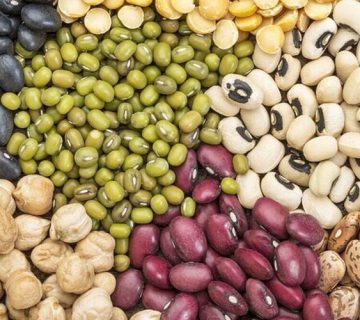Macro-N (nitrogen) deficiency
Symptoms of nitrogen deficiency first appear in older leaves as uniform chlorosis (yellow-green), which later develops into a reddish discoloration of the leaves. In severe nitrogen deficiency, the plant shows symptoms such as shorter growth, smaller leaves, shorter fruiting shoots, and poor boll retention, leading to reduced yield.
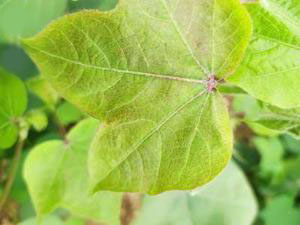
Kimat’s proposed solution:
Macro-K (Potassium) deficiency
Yellowing of leaves, starting at the margins and tips of the leaves and appearing as chlorosis (yellowing between the veins), while the main veins remain dark green. As the deficiency progresses, the leaf margins become scorched and necrotic (drying and browning) and the leaves become brittle and dry. The leaves may curl and wrinkle and eventually fall prematurely. In severe cases, the fruits (bolls) may be deformed and the cotton yield and quality are reduced. Symptoms appear first on older leaves and in severe deficiency spread to younger leaves. Affected leaves may have brown or reddish-brown spots.
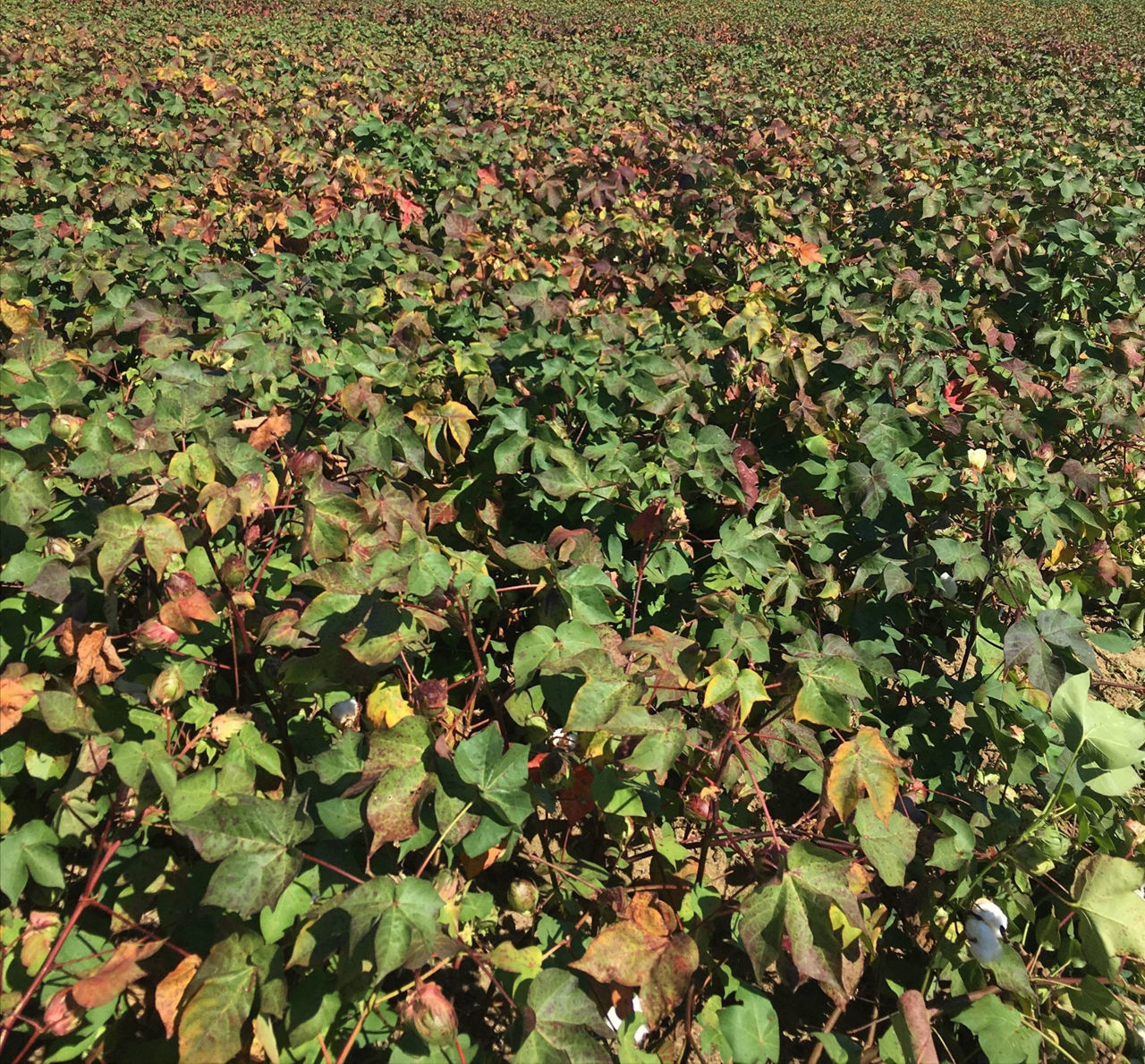
Kimat’s proposed solution:
Micro-element deficiency – Fe (iron)
Iron deficiency symptoms in cotton are mainly caused by calcareous soil conditions, high pH, and heavy irrigation, which limit iron uptake. Yellowing between the veins is seen in the upper young leaves while the main veins remain dark green. In severe cases, the leaves turn whitish yellow and necrotic brown spots appear, especially on the leaf margins.
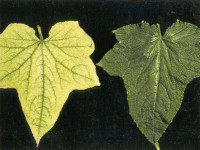 |
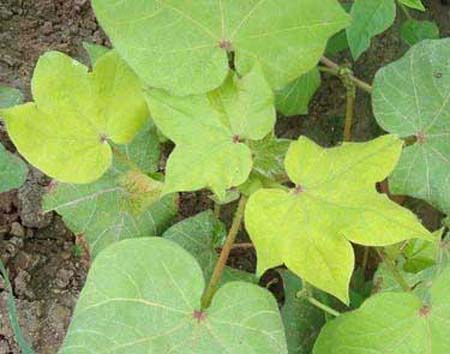 |
Kimat’s proposed solution:
Secondary macronutrient deficiency-Mg (magnesium)
Magnesium plays a key role in the formation of chlorophyll and the activity of photosynthetic enzymes. Due to its mobility in the plant, the deficiency of this element first appears in older leaves and gradually spreads to younger leaves. Yellowing between the veins in the lower and older leaves, while the main veins remain bright green. Severe magnesium deficiency causes the appearance of brown or red spots on the margins and surface of the leaves, accompanied by drying and brittleness of the tissue.
